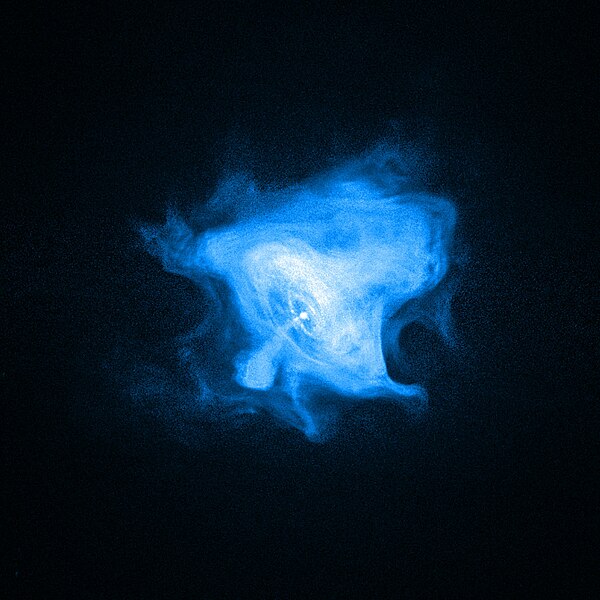Αρχείο:Crab Nebula pulsar x-ray.jpg

Μέγεθος αυτής της προεπισκόπησης: 600 × 600 εικονοστοιχεία . Άλλες αναλύσεις: 240 × 240 εικονοστοιχεία | 480 × 480 εικονοστοιχεία | 768 × 768 εικονοστοιχεία | 1.024 × 1.024 εικονοστοιχεία | 2.048 × 2.048 εικονοστοιχεία | 3.300 × 3.300 εικονοστοιχεία.
Εικόνα σε υψηλότερη ανάλυση (3.300 × 3.300 εικονοστοιχεία, μέγεθος αρχείου: 1,07 MB, τύπος MIME: image/jpeg)
Ιστορικό αρχείου
Κλικάρετε σε μια ημερομηνία/ώρα για να δείτε το αρχείο όπως εμφανιζόταν εκείνη τη στιγμή.
| Ώρα/Ημερομ. | Μικρογραφία | Διαστάσεις | Χρήστης | Σχόλια | |
|---|---|---|---|---|---|
| τελευταία | 14:37, 28 Ιουλίου 2009 |  | 3.300 × 3.300 (1,07 MB) | Raeky | {{Information |Description= '''Description''': In the Crab Nebula, a rapidly rotating neutron star, or pulsar (white dot near the center), powers the dramatic activity seen by Chandra. The inner X-ray ring is thought to be a shock wave that marks the boun |
Συνδέσεις αρχείου
Τα παρακάτω λήμματα συνδέουν σε αυτό το αρχείο:
Καθολική χρήση αρχείου
Τα ακόλουθα άλλα wiki χρησιμοποιούν αυτό το αρχείο:
- Χρήση σε af.wikipedia.org
- Χρήση σε en.wikipedia.org
- Χρήση σε en.wikiquote.org
- Χρήση σε gl.wikipedia.org
- Χρήση σε id.wikipedia.org
- Χρήση σε ja.wikipedia.org
- Χρήση σε kk.wikipedia.org
- Χρήση σε nl.wikipedia.org
- Χρήση σε ru.wikipedia.org
- Χρήση σε zh.wikipedia.org
